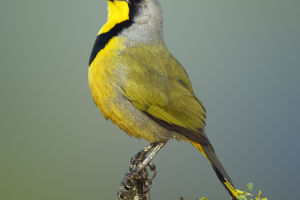Cat eyes are similar to human eyes and are composed of a cornea, iris, lens, retina, and other structures.
Cats are animals with binocular vision. A single cat eye has a field of vision of 100 degrees, and both eyes can reach a wide angle of vision of 200 degrees. The visual sensitivity of cats is six times that of humans.
Not only do they have a good daytime vision, but they also have extremely sharp night vision, allowing them to clearly distinguish objects in low-light environments.
This keen vision and wide viewing angle allow cats to see a much larger range of things than humans, which is necessary for their survival.
This starts with the function of the pupil, which is located in front of the lens and controls the intensity of light entering the lens. The pupil changes in size with the intensity of external light.
The reason why humans find cats mysterious is because of their eyes. The cat's eyes are comparable to jewels, and their pupils can change shape with day and night.
Cat eyes come in a variety of colors, such as blue, green, yellow, and brown. Moreover, there is a transitional relationship between these colors, and there is no clear boundary. These colors are mainly determined by the iris.
The iris is the colored part around the pupil, which is mainly composed of sphincter muscles that control the amount of light passing through, similar to a camera's aperture. While the change of the human iris with light is not obvious, the cat's iris can shrink to only a thin slit.
The iris has two layers containing pigment cells. The outer layer is the stroma, which consists of loosely arranged cells. Below the stroma is the epithelium, which contains tightly packed cells.
Both the stroma and epithelium produce pigment but in varying amounts. Hyperpigmentation of the iris is caused by melanin and can vary in color from lemon yellow to hazel to dark orange or brown.
Feral cats in temperate regions typically have hazel eyes, while domestic cats can have a range of eye colors, from blue to green, yellow, orange, and brown, each varying greatly in hue and intensity.
You may have noticed in your daily life that sometimes a cat's pupil is a vertical line, and sometimes it becomes round. The general rule is that the pupil changes with the intensity of the light.
The most obvious change occurs during the day and night. During the day, the pupils are mostly formed into a vertical line to reduce the entry of light and avoid damaging the eyes.
At night, when the light is weak, the pupils are fully dilated and round, collecting more light to help see objects clearly, which is helpful for night activities or hunting.
In addition to changes in the normal physiological response to light exposure, different pupil shapes also indicate different moods in cats. When a cat's pupils dilate, it means that the cat is frightened and needs to be comforted.
If the cat's pupils are constricted, it means that the cat is nervous, and one should be aware that the cat may overreact. If the cat's pupils are staring directly, it means that the cat is thinking.


